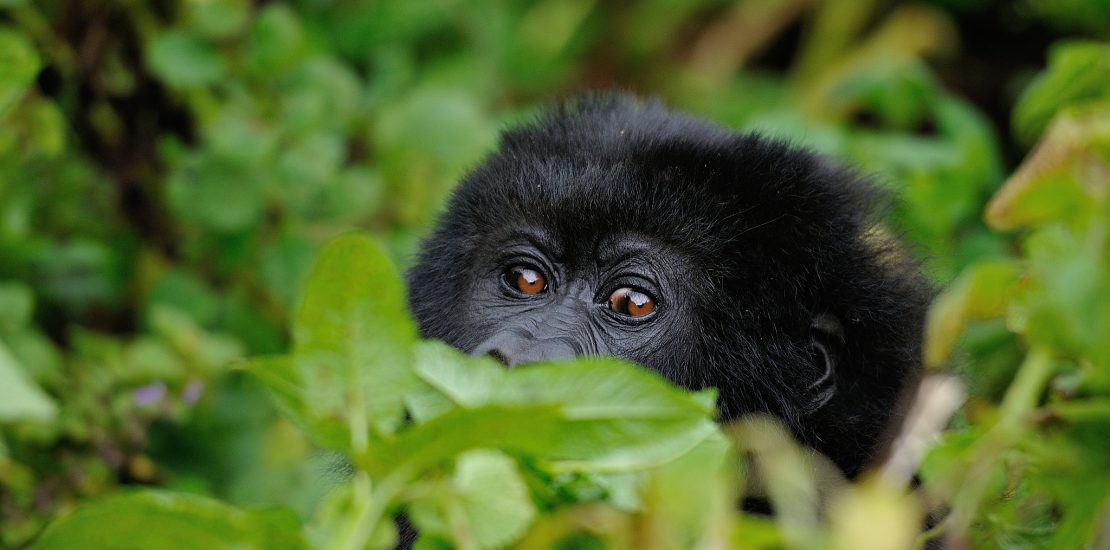- July 21, 2021
- Posted by: Love Uganda Safaris & Tours Ltd
- Category: Blog

With a close difference with the human genes, with only a 1.6% difference from the gorilla’s species. Gorillas have become a unique ape species that draws a lot of attention to primate travelers.
Recent studies about gorillas suggest that two gorilla species are subdivided into four species. Scientists suggest the gorilla population located in Bwindi impenetrable national park would make up the third sub-species of the Eastern gorillas.
Gorillas are divided into the western and eastern gorilla species. The eastern gorilla (Gorilla beringei) is further subdivided into mountain gorilla (Gorilla beringei beringei) and Eastern lowland gorilla (Gorilla beringei graueri).
The western gorilla (Gorilla gorilla) is divided into two subspecies. These include the western lowland gorilla (gorilla gorilla gorilla) and the cross river gorilla (Gorilla gorilla deli).
Distribution of the gorilla species
Gorillas inhabit the areas of central sub-Sahara Africa and tropical forests. The western gorilla species are located in west central Africa and the eastern species are located in the East African region. Depending on the types of the species, gorillas live in swampland and montane forests.
The mountain gorillas live in the high most montane at the higher revelations while the eastern lowland gorillas prefer a lower sub-montane forest or sometimes the bamboo sub-montane forests. The western gorilla species live in lowland forests and swamps, and the cross-river gorillas, prefer living in the sub-montane and low-lying forests.
Physical description
Gorillas are the largest living primates, with adult males making a height from 1.4 to 1.8 m on average, and females being shorter with a height from 1.25m to 1.5m. Wild male gorillas can weigh from 136kg to 200kg and more. The female gorillas on average weigh lesser than the males with a weight of 68 kg to 133 kg.
The physical description of the gorillas helps to differentiate the subspecies. The eastern gorillas are bulk in size with thick hair, a broader chest, and a long face. The western gorilla is more slender in size, with a brown or greyish color and a reddish forehead. All the gorilla species uniquely have individual fingerprints.
Social behavior
Gorillas live in troops made of females, infants, and silverbacks – also known to be the dominant males. The silverbacks are responsible for safety, decision-making, maneuvering, and mediating conflicts. The female gorillas and male gorillas emigrant from their natal troupes especially the females.
Communication
Twenty-five distinct vocalizations are recognized, many of which are used primarily for group communication within dense vegetation. Gorillas use these as a way to communicate within their troops or outside to the other gorilla groups. Depending on the activity, feeling, and sounding of the gorillas, they will make various vocals depending on such factors.
During social interactions, gorillas tend to make barks and grunts. In case of displacement, gorillas bark and grunt to indicate or find out the location of a lost group member. Silverbacks roar and scream in the face of danger or any kind of threat to alert other members and also to exercise dominance.
In the case of intergroup communications, deep rumblings are made specially to indicate contentment while feeding. The most famous physical expression of the gorillas is; chest-beating, usually done when the females are ready for mating.
Intelligence and use of tools
Gorillas are intelligent great apes and are capable of using various tools and objects in their daily life. They are also emotional beings and they experience joy, grief, and laughter through their expression.
Reproduction and mating
Female gorillas mature at the age of 10-12years while the males mature at 11 -13years. Their gestation period is of 8.5 months, and they give birth to one baby gorilla. However, on rare occasions give birth to twins. In Bwindi impenetrable national park of Uganda, the Nkuringo gorilla family recorded the birth of a twin set in 2004. But later died when the mother gorilla couldn’t take care of them.
Competition
leopards are the only possible predators to the gorilla species, as remains of gorillas were once found at a leopard dare. Gorillas are herbivorous apes, making them not a predator to ant wildlife.
The eastern gorilla species are located in Uganda, Rwanda, and the Democratic Republic of Congo. The western gorilla species can be sighted in Gabon, Cameroon, Central African Republic, Equatorial Guinea, and D.R.C
Gorilla trekking in these countries has been a great preference for primate lovers, as they get to experience these great apes in their natural habitat. Bwindi impenetrable national park and Mgahinga national park, are the homes of the mountain gorillas in Uganda. In Rwanda, the volcanoes national park is the only protected area in the country that is home to the eastern gorillas. The democratic republic of Congo is home to the eastern low land gorillas in Virunga national park and Kahuzi Beiga national park.
The gorilla species is one not to miss out seeing, while one takes on the safari expeditions in its home destinations.
Leave a Reply
You must be logged in to post a comment.
